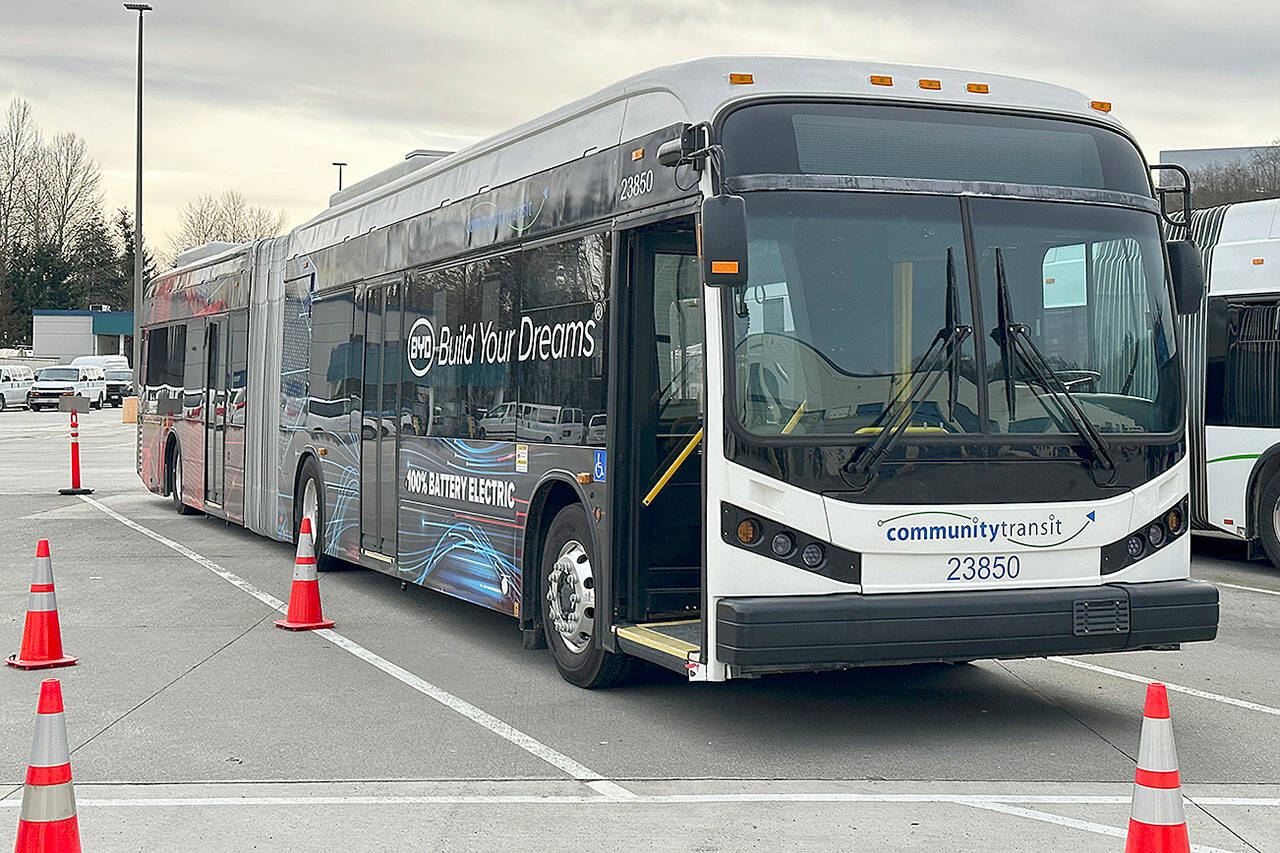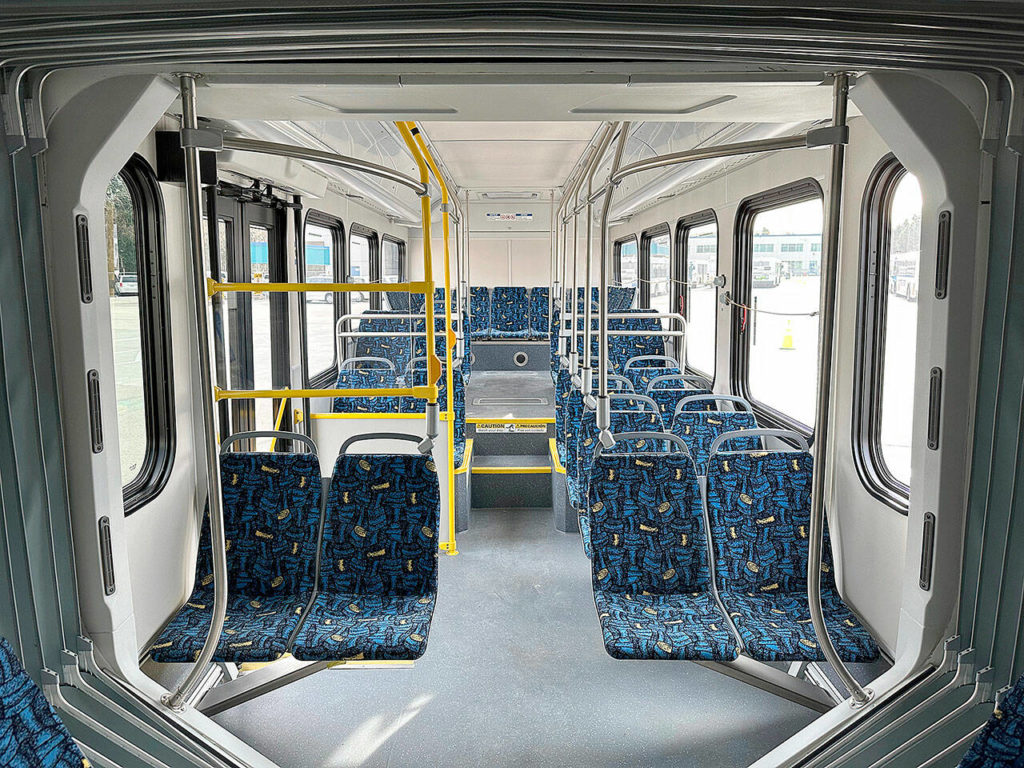Community Transit is kicking the tires of zero emissions transportation.
The bus, paratransit and vanpool service for most of Snohomish County is testing a 60-foot electric bus this year. It’s being leased for $132,000 from BYD, a Chinese company that builds buses in Lancaster, California.
The agency got the BYD K11M articulated bus, similar to the accordion-style buses on Swift lines, in January. Drivers and maintenance employees are familiarizing themselves with the new bus that runs on Snohomish County Public Utility District electricity instead of gasoline.
It’s the first part of a years-long process to plan for Community Transit’s transition from buses that run on diesel gasoline to either electric battery or hydrogen fuel cell.
“Everyone is eager to see how these perform,” Community Transit zero emissions senior program manager Jay Heim said.
Community Transit has over 300 buses in its fleet today.
Only the BYD articulated bus runs without carbon emissions.
The transition for the rest tentatively starts with two purchases that will be delivered next year. After that, it will be another 55 to 60 new purchases for the Gold Swift bus rapid transit line between Arlington and Everett and replacements by 2027, Heim told the board in January.
Staff didn’t have an estimate for the cost of swapping the fleet for zero-emission vehicles, aside from it having “a lot of zeroes.” They expect to receive federal and state funding to help cover the tab over the coming years.
Without an engine clanging around, it’s so quiet you can hear the squeak in the suspension, Heim said.
Inside, the seating layout is different from the rest of the fleet’s 60-foot buses.
The agency plans to keep it as an internal experiment for at least the first half of the year, so passengers aren’t likely to board it anytime soon.
Starting with a 60-foot bus lets Community Transit identify “extreme” case use because they consume more energy, whether that’s electricity or gas, planning and development director Roland Behee said.
As part of the lease, the bus came with plug-in chargers and the ability to get near real-time data about the battery and other systems.
The “magic number” is kilowatt-hours per mile to help determine range, Heim said. Charging time is another important metric they’ll monitor, which could factor into plans for layover time and locations for “opportunity” charging stations.
“We’ll really learn where the points are in our bus network where we can’t serve on a charge effectively,” Behee said.
The San Francisco Municipal Transportation Agency bought three BYD 40-foot long-range buses as part of a 12-bus order from four different manufacturers. It has about 860 vehicles, including light rail trains and trolleys.
SFMTA staff are testing 10 of the battery electric buses and waiting on delivery of the last two. As part of a report likely to be published next year, they are analyzing driver and maintenance staff impacts, and evaluating production capacity as part of its state-mandated transition to zero emissions vehicles by 2040.
“We’re pretty happy with all of them,” SFMTA senior engineer Bhavin Khatri said.
SFMTA chose battery electric over fuel cell primarily because of costs, Khatri said. Electricity is cheap compared to fuel cell technology.
Facilities space also was a factor, as the agency didn’t have room for hydrogen fuel storage.
One thing they’ve learned so far is they probably don’t need long-range battery capacity, Khatri said. Partly because SFMTA’s service area is 49 square miles, and partly because of higher-than-average regenerative braking production due to the famous hills in San Francisco.
“As far as the bus is concerned, we don’t have any issues with mileage or grade,” Khatri said.
Community Transit, by comparison, has a service area over 1,300 square miles. Some routes can nearly span the county north and south, so its range needs may be higher.
Next year, Community Transit will test one Gillig battery electric and one New Flyer fuel cell bus, both 40 feet.
At the same time, Community Transit is conducting a study about the impact to the PUD. Charging 300 buses’ batteries would require a lot of energy, plus there are concerns about grid resilience. At that scale, having generators as backup energy supply would be costly and contradict the purpose of investing in zero emission vehicles, Heim said.
“As we get into 100, 200 battery electrics, I’m not sure a generator solution would be viable,” Heim said.
Have a question? Call 425-339-3037 or email streetsmarts@heraldnet.com. Please include your first and last name and city of residence.
Talk to us
> Give us your news tips.
> Send us a letter to the editor.
> More Herald contact information.


























